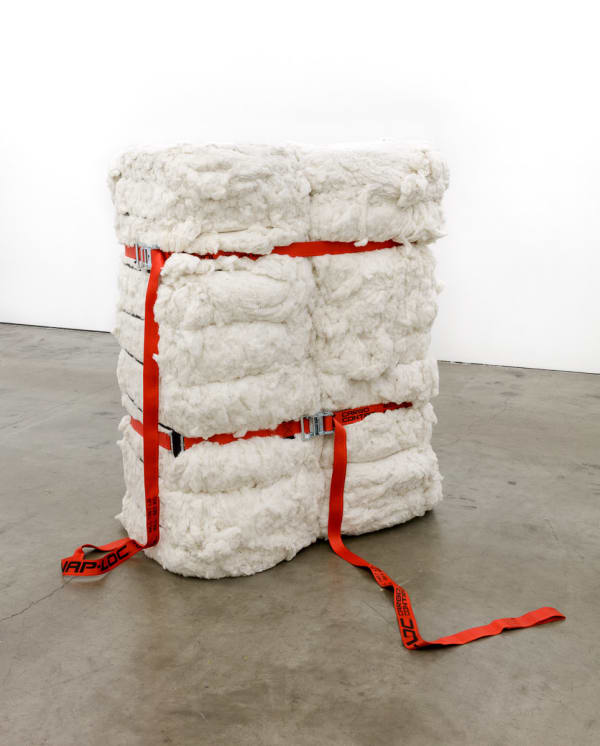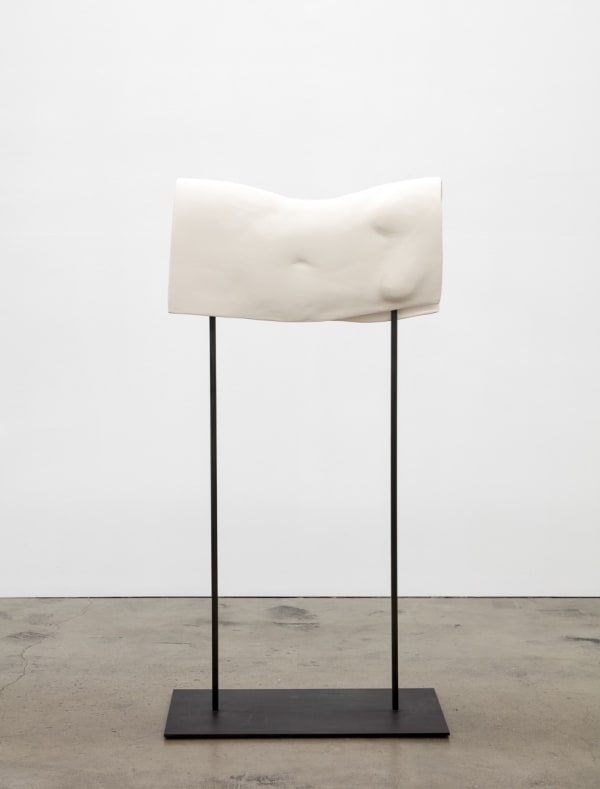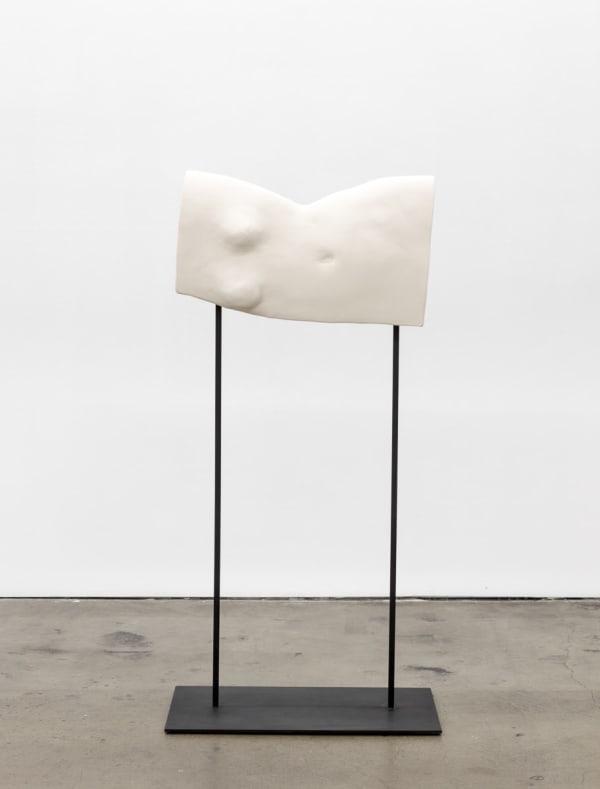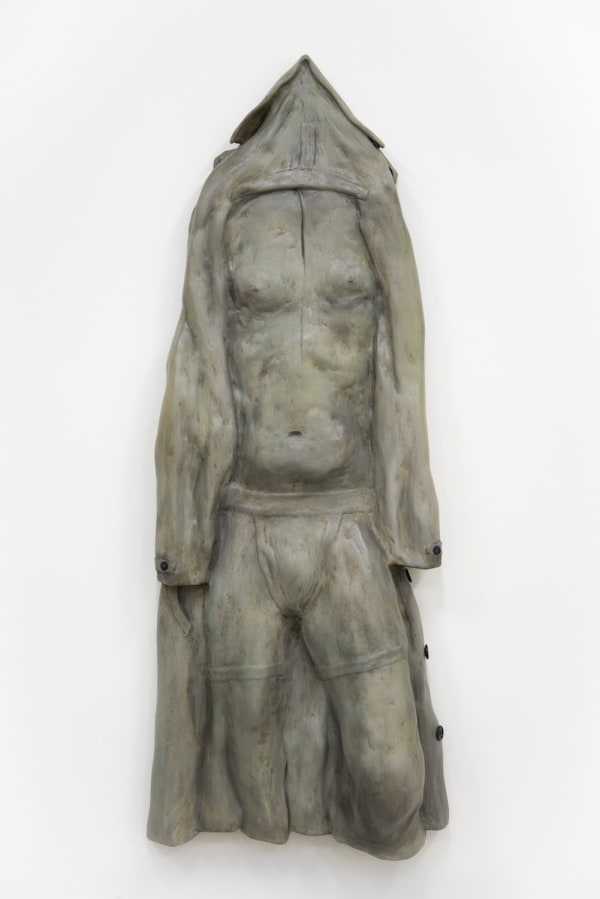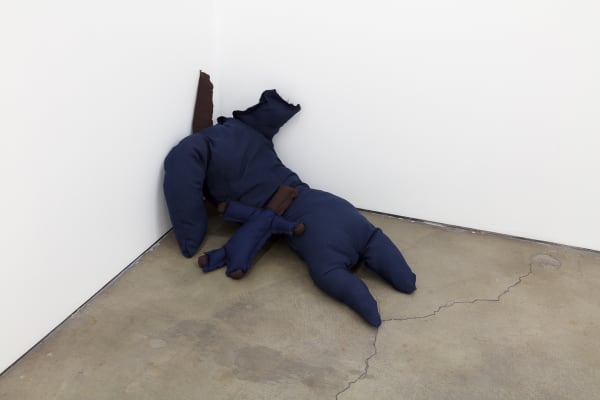The Pain of Others: Group Exhibition
In Do Androids Dream of Electric Sheep, Philip K. Dick describes the androids as physically indistinguishable from humans. The only way they can be identified as post-human creatures is through a test that measures their physiological responses to hypothetical scenarios that should evoke a moral shock. Though they look, think, and sound human, the one thing the androids lack is empathy, the ability to love and feel for lives other than their own. But in times where pain is more and more mediated through a constant stream of images and visual stimuli, can anyone actually relate to it? How can it be conveyed within our “culture of spectatorship” without transforming the intolerable into fiction and without an irrelevant form of aestheticization?
The Pain of Others draws its title from Susan Sontag’s eponymous essay analyzing the representation of pain and our reaction, as viewers, to images of horror. The exhibition features the works of artists whose practices evoke both discomfort and empathy, bridging personal and shared memory while allowing a certain emotional charge to crystallize around a material. It reflects on the ability to convey someone else’s pain through representation. Does the pain of others titillate us as long as it is kept at a safe distance?
The exhibition aims to draw a non-linear narrative about our human ability to truly comprehend someone else’s pain, in the etymological sense of grasping together the feelings of others. The artists give substance to the utter incommunicability of violence, trauma and pain, initiating a tender yet sharp dance with the question of what, apparently, makes us human.
Curated by Myriam Ben Salah
Julien Ceccaldi (b.1987, Montreal, Canada) lives in New York. Recent solo exhibitions include Jenny’s, Los Angeles; Lomex, New York; and the Paradise Garage, Venice, California. Ceccaldi has recently participated in group exhibitions at the KW Institute, Berlin; Greene Naftali, New York; and Supportico Lopez, Berlin, among others. Ceccaldi’s comics have been featured in print and online publications, and he has self-published three comic books.
Aria Dean (b.1993, Los Angeles, California) is an artist, writer, and curator based in Los Angeles. She serves as Assistant Curator of Net Art & Digital Culture at Rhizome. Her writing has been featured in Artforum, Art in America, e-flux Journal, The New Inquiry, Real Life Magazine, Topical Cream Magazine, Mousse Magazine, CURA Magazine, and X-TRA Contemporary Art Quarterly. She has exhibited at American Medium, New York; Arcadia Missa, London; Chateau Shatto, Los Angeles; The Sunroom, Richmond, Virginia; Air de Paris, Paris; and Boatos Fine Art, São Paulo, among other venues. Dean also co-directs As It Stands, a Los Angeles project space.
Dan Finsel (b.1982, Lehighton, Pennsylvania) lives and works in Los Angeles. He has exhibited internationally at venues including the Benaki Museum, Athens; the MAC/VAL Museum, Paris; the IAC, Institut d’art contemporain, Lyon; and the Hammer Museum, Los Angeles. His recent solo exhibitions include Ramiken Crucible, New York; Richard Telles Fine Art, Los Angeles; CAPC, musée d’art contemporain de Bordeaux, France.
Dan Herschlein (b. 1989, Bayville, New York) lives and works in New York. Using honed woodworking techniques Herschlein constructs meticulous sculptures in which figurative elements emerge from household objects or lurk in the dark spaces of domestic architecture. Recent solo exhibitions include JTT, New York; 56 Henry, New York; and AALA, Los Angeles.
Elizabeth Jaeger (b.1988, San Francisco, California) lives and works in Brooklyn, New York. Her sculptures embed common figural elements in existential concepts of reality and perception. Recent solo and two-person exhibitions include Jack Hanley Gallery, New York; And Now, Dallas; and Eli Ping, New York. She has participated in numerous group exhibitions including at White Cube, London; Museum of Contemporary Art Detroit; Arsenal Contemporary, New York; Galleria Zero, Milan; Whitney Museum of American Art, New York; MoMA PS1, New York; and SculptureCenter, New York. Her published works include Vitamin C: Clay and Ceramics in Contemporary Art (Phaidon, 2017), Dreamers Awake (White Cube, 2017), Eros C’Est La Vie (Totem, 2013), and How Other People See Me (Publication Studio, 2011). Additionally, Jaeger co-founded and operates Peradam, a publishing house specializing in artists’ books, with Sam Cate-Gumpert.
Arthur Jafa (b.1960, Tupelo, Mississippi) currently lives and works in Los Angeles. Renowned for his cinematography on Julie Dash’s pioneering film Daughters of the Dust (1991), Jafa put into practice techniques he had long been theorizing. The idea of “Black Visual Intonation” is but one of his radical notions about re-conceptualizing film. He is the director of numerous films, including Slowly This (1995), Tree (1999), and Deshotten 1.0 (2009), and Dreams are Colder Than Death (2013). He served as director of photography on Spike Lee’s Crooklyn (1994), Isaac Julien’s Darker Shade of Black (1994), John Akomfrah’s Seven Songs for Malcolm X (1993), Manthia Diawara’s Rouch in Reverse (2000), and Nefertite Nguvu’s In the Morning (2014). His writing on black cultural politics has appeared in various publications such as Black Popular Culture and Everything But the Burden, among others. Jafa’s notable solo, group, gallery and museum exhibitions include Artists Space, New York; Okwui Enwezor’s exhibition Mirror’s Edge, traveling; Whitney Museum of American Art, New York; CCAC Institute, Oakland; Artpace, San Antonio; Institute of Contemporary Art, Philadelphia; Hammer Museum of Art, Los Angeles; Gavin Brown’s enterprise, New York; Serpentine Gallery, London; and the Los Angeles Museum of Contemporary Art.
Dala Nasser (b.1990, Lebanon) lives and works in Beirut, Lebanon, where she centers her practice around questions of material and process, producing works that respond to their physical and contextual components, evolving autonomously over time. Having received her BFA in Fine Arts with focus in painting from University College London’s Slade School of Arts in 2016, she was awarded the Boise Travel Scholarship and the Sursock Museum in Beirut’s 32nd Salon D’Automne Emerging Artist Prize. Her work was most recently featured in Sharjah Biennial 13 ACT II at the Beirut Art Center. She has exhibited work in the United Kingdom, United Arab Emirates, and Lebanon.
Lydia Ourahmane (b.1992 Saïda, Algeria) lives and works between London, United Kingdom, and Oran, Algeria. She graduated from Goldsmiths, University of London, and her artistic practice spans new media, video, public interventions, lecture-performance, sculptures, and found objects. Ourahmane’s work explores youth, transitional existences, surveillance, and complex social and political structures. Recent exhibitions include the New Museum, New York; Chisenhale Gallery, London; 15th Istanbul Biennial; Garage Rotterdam, Netherlands; Luigi Pecci Center for Contemporary Art, Prato, Italy; Zachęta National Gallery of Art, Warsaw; Interstate Projects, New York; Palais de La Culture, Algeria; and Institute of Contemporary Arts, London.
Diamond Stingily (b.1990, Chicago, Illinois) is an artist and writer based in Brooklyn, New York. Her recent solo shows include Ramiken Crucible, New York and Queer Thoughts, New York. Her recent group shows include 315 Gallery, Brooklyn; Queer Thoughts, New York; Ramiken Crucible, Los Angeles; A1, Chicago; Arcadia Missa, London; Queer Thoughts, Nicaragua; and Dominica Publishing, Los Angeles.
Andra Ursuţa (b.1979, Salonta, Romania) lives and works in New York. She received a BA in art history and visual arts in 2002 from Columbia University. Ursuta has had several solo shows in New York, and her work has been featured in numerous group exhibitions, including the 55th Venice Biennale, Venice, Italy; the High Line, New York; MoMA PS1, New York; New Museum, New York; and White Columns, New York.
About the curator:
Myriam Ben Salah (b. 1985, Algiers) is a curator and writer partially based in Paris, where she coordinated special projects and public programs at the Palais de Tokyo from 2009 to 2016, with a special focus on performance, video and publishing initiatives. She is the Editor in Chief of Kaleidoscope Magazine. She also co-edited F.A.Q., a periodical image-only magazine with artist Maurizio Cattelan, as well as FEB MAG, the publication of the Underground Museum in Los Angeles. She is currently working on the first monograph of artist Neïl Beloufa. Her writings have appeared in numerous international art publications and catalogues. Ben Salah is the curator of the 10th edition of the Abraaj Group Art Prize taking place in Dubai in March 2018.
-
 Dala Nasser, This Dirt is Kind of Holy, 2018
Dala Nasser, This Dirt is Kind of Holy, 2018 -
 Aria Dean, Two Cotton Bales Bound Together At 250lbs Each, 2018
Aria Dean, Two Cotton Bales Bound Together At 250lbs Each, 2018 -
 Dan Finsel, My Burning Bed, 2008
Dan Finsel, My Burning Bed, 2008 -
 Lydia Ourahmane, Haraga: "The Burning", 2014
Lydia Ourahmane, Haraga: "The Burning", 2014 -
 Elizabeth Jaeger, Mantle, 2018
Elizabeth Jaeger, Mantle, 2018 -
 Elizabeth Jaeger, Case, 2018
Elizabeth Jaeger, Case, 2018 -
 Elizabeth Jaeger, Veil, 2018
Elizabeth Jaeger, Veil, 2018 -
 Julien Ceccaldi, Pinned to the Bed, 2015
Julien Ceccaldi, Pinned to the Bed, 2015 -
 Andra Ursuta, Alps 5, 2016
Andra Ursuta, Alps 5, 2016 -
 Diamond Stingily, Big Hergott & Little Hergott, 2017
Diamond Stingily, Big Hergott & Little Hergott, 2017 -
 Dan Herschlein, The Overcoat, 2017
Dan Herschlein, The Overcoat, 2017 -
 Dan Herschlein, I Was Once a Deserted Room, 2017
Dan Herschlein, I Was Once a Deserted Room, 2017 -
 Arthur Jafa, Cassowary_Mechanics of Empathy, 2017
Arthur Jafa, Cassowary_Mechanics of Empathy, 2017



